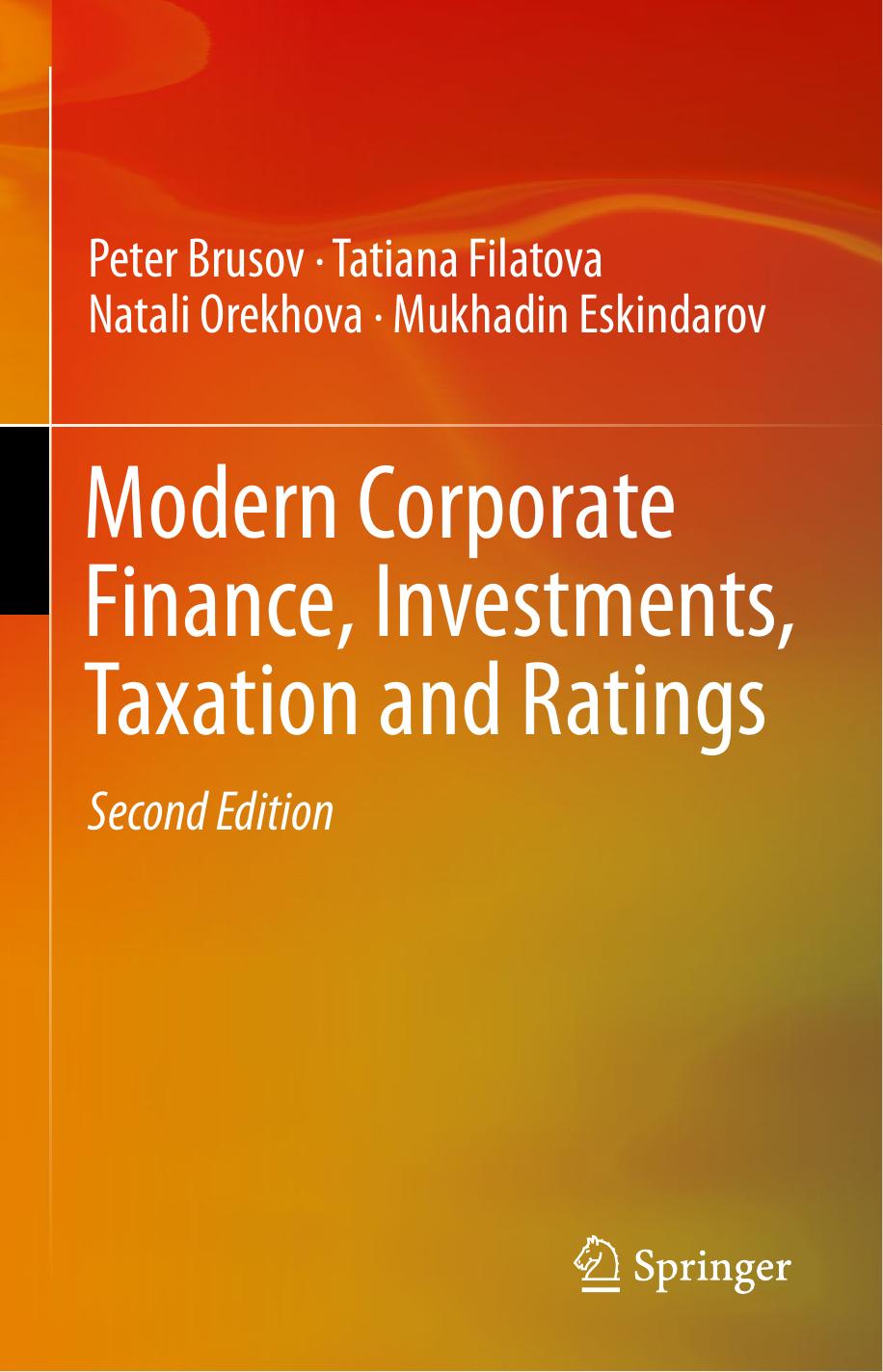Modern Corporate Finance Investments Taxation and Ratings 2nd Edition.3319996851 Wei Zhi
$70.00 Original price was: $70.00.$35.00Current price is: $35.00.
Modern Corporate Finance, Investments, Taxation and Ratings 2nd Edition by Peter Brusov; Tatiana Filatova; Natali Orekhova; Mukhadin Eskindarov 9783319996868 331999686X
Instant download Modern Corporate Finance Investments Taxation and Ratings 2nd Edition.3319996851 Wei Zhi pdf, docx, kindle format all chapters after payment.
Product details:
- ISBN 10: 331999686X
- ISBN 13: 9783319996868
- Author: Peter Brusov; Tatiana Filatova; Natali Orekhova; Mukhadin Eskindarov
This monograph is devoted to a modern theory of capital cost and capital structure created by this book’s authors, called the Brusov–Filatova–Orekhova (BFO) theory, and its application to the real economy. BFO theory promises to replace the traditional theory of capital cost and capital structure by Nobel laureates Modigliani and Miller. This new theory in particular, presents a possible explanation to the causes of the recent global financial crisis. The authors of the book describe the general theory of capital cost and capital structure that can be applied to corporations of arbitrary age (or with arbitrary lifetime) and investment projects with arbitrary duration. The authors illustrate their theory with examples from corporate practice and develop investment models that can be applied by companies in their financial operations.This updated second edition includes new chapters devoted to the application of the BFO theory in ratings, banking and other areas. The authors alsoprovide a new approach to rating methodology highlighting the need for including financial flow discounting, the incorporation of rating parameters (in particular, financial ratios) into the modern theory of capital structure – BFO theory. This book aims to change our understanding of corporate finance, investments, taxation and rating procedures. The authors emphasize that the most used principles of financial management should be changed in accordance to BFO theory.
Table contents:
Part I. Corporate Finance
1. Introduction
2. Capital Structure: Modigliani–Miller Theory
3. Modern Theory of Capital Cost and Capital Structure: Brusov–Filatova–Orekhova Theory (BFO Theory)
4. Bankruptcy of the Famous Trade-Off Theory
5. New Mechanism of Formation of the Company’s Optimal Capital Structure, Different from Suggested by Trade-Off Theory
6. The Global Causes of the Global Financial Crisis
7. The Role of Taxing and Leverage in Evaluation of Capital Cost and Capitalization of the Company
8. A Qualitatively New Effect in Corporate Finance: Abnormal Dependence of Equity Cost of Company on Leverage
9. Inflation in Brusov–Filatova–Orekhova Theory and in Its Perpetuity Limit Modigliani–Miller Theory
Part II
10. A Portfolio of Two Securities
11. Investment Models with Debt Repayment at the End of the Project and Their Application
12. Influence of Debt Financing on the Efficiency of Investment Projects: The Analysis of Efficiency of Investment Projects Within the Perpetuity (Modigliani–Miller) Approximation
13. The Analysis of the Exploration of Efficiency of Investment Projects of Arbitrary Duration (Within Brusov–Filatova–Orekhova Theory)
14. Investment Models with Uniform Debt Repayment and Their Application
Part III. Taxation
15. Is It Possible to Increase Taxing and Conserve a Good Investment Climate in the Country?
16. Is It Possible to Increase the Investment Efficiency by Increasing Tax on Profit Rate? An Abnormal Influence of the Growth of Tax on Profit Rate on the Efficiency of the Investment
17. Optimizing the Investment Structure of the Telecommunication Sector Company
18. The Golden Age of the Company (Three Colors of Company’s Time)
19. A “Golden Age” of the Companies: Conditions of Its Existence
20. The Role of the Central Bank and Commercial Banks in Creating and Maintaining a Favorable Investment Climate in the Country
Part IV. Ratings and Rating Methodologies
21. Rating: New Approach
22. Rating Methodology: New Look and New Horizons
23. Ratings of Long-Term Projects: A New Approach
24. New Meaningful Effects in Modern Capital Structure Theory
25. Conclusion
People also search:
modern corporate fonts
modern finance and corporate finance
current issues in corporate finance
modern finance corp
modern finance microsoft


